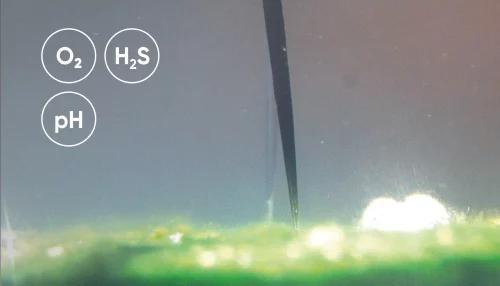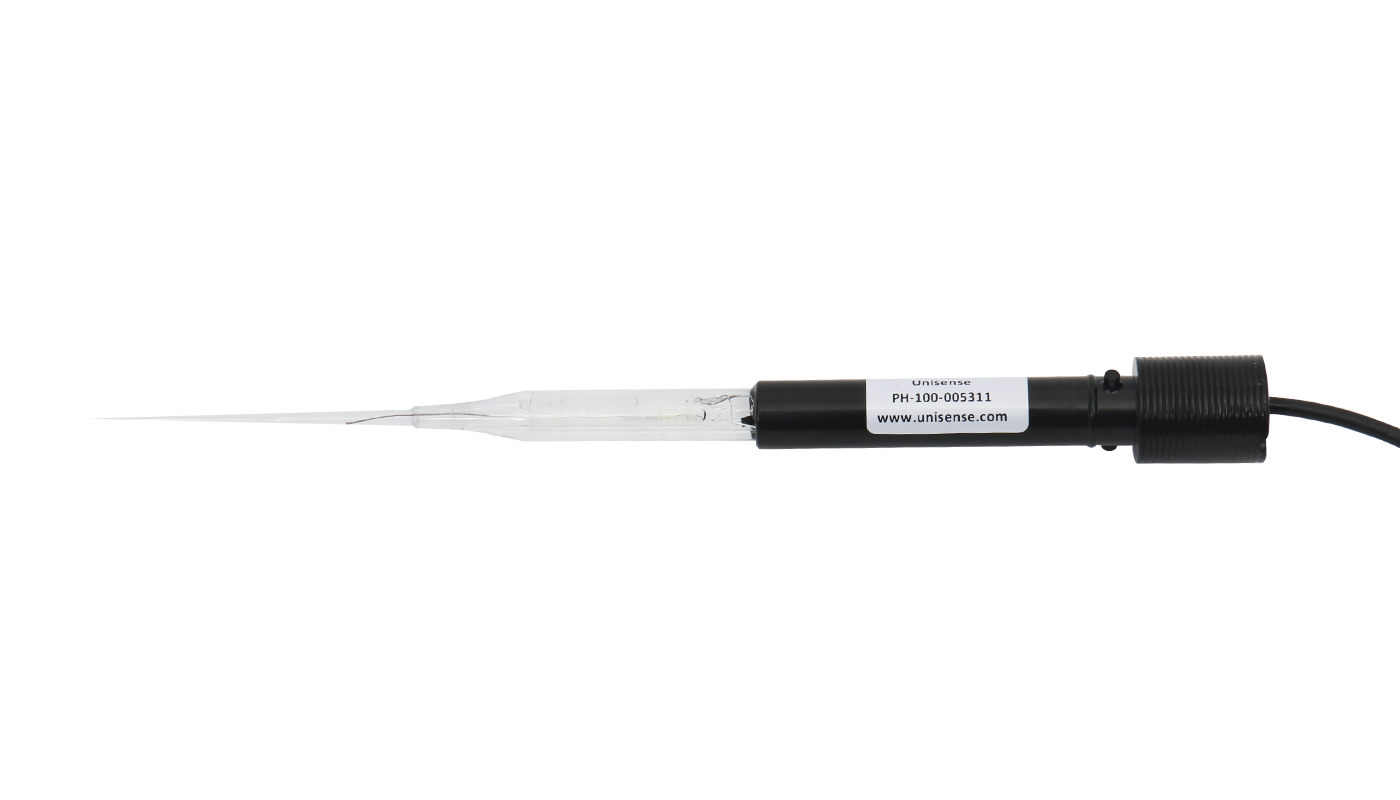
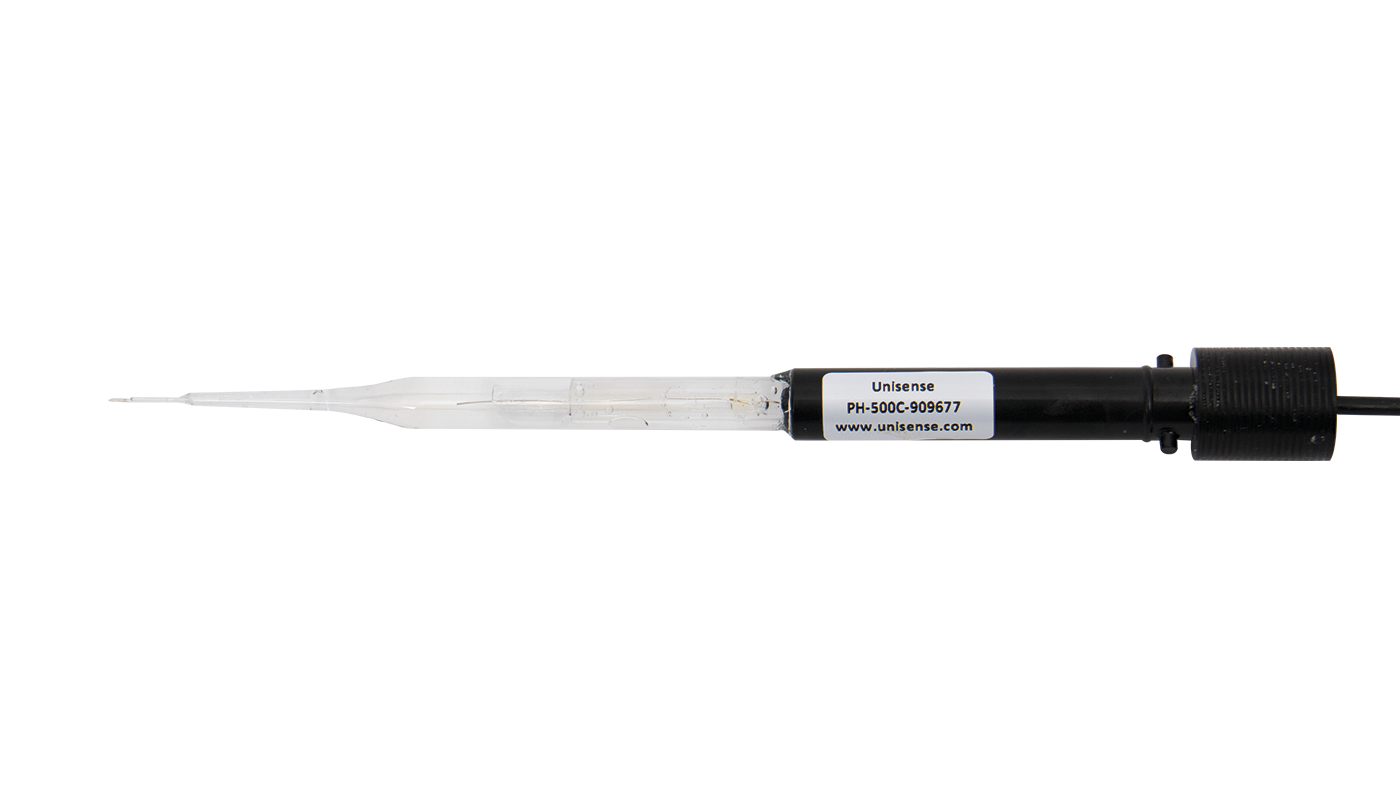
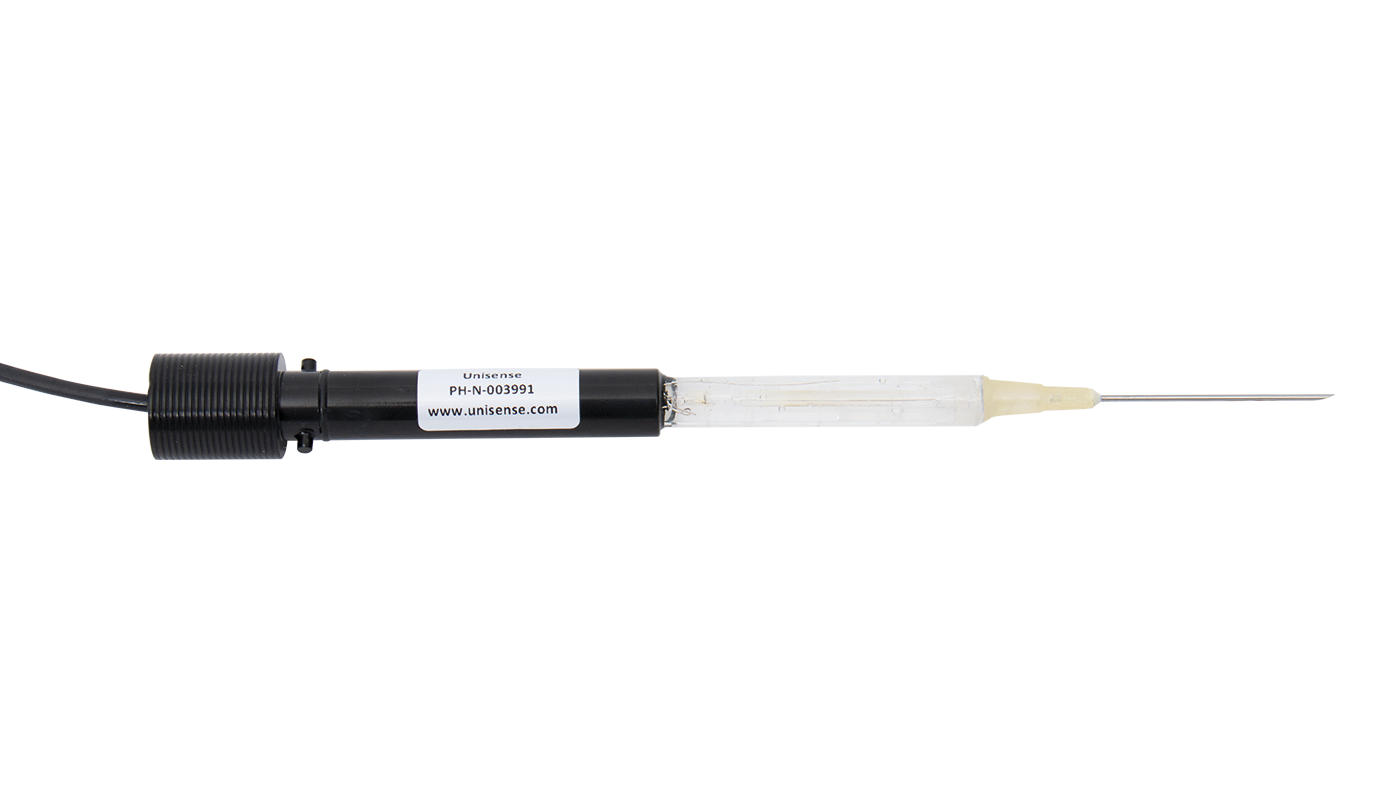
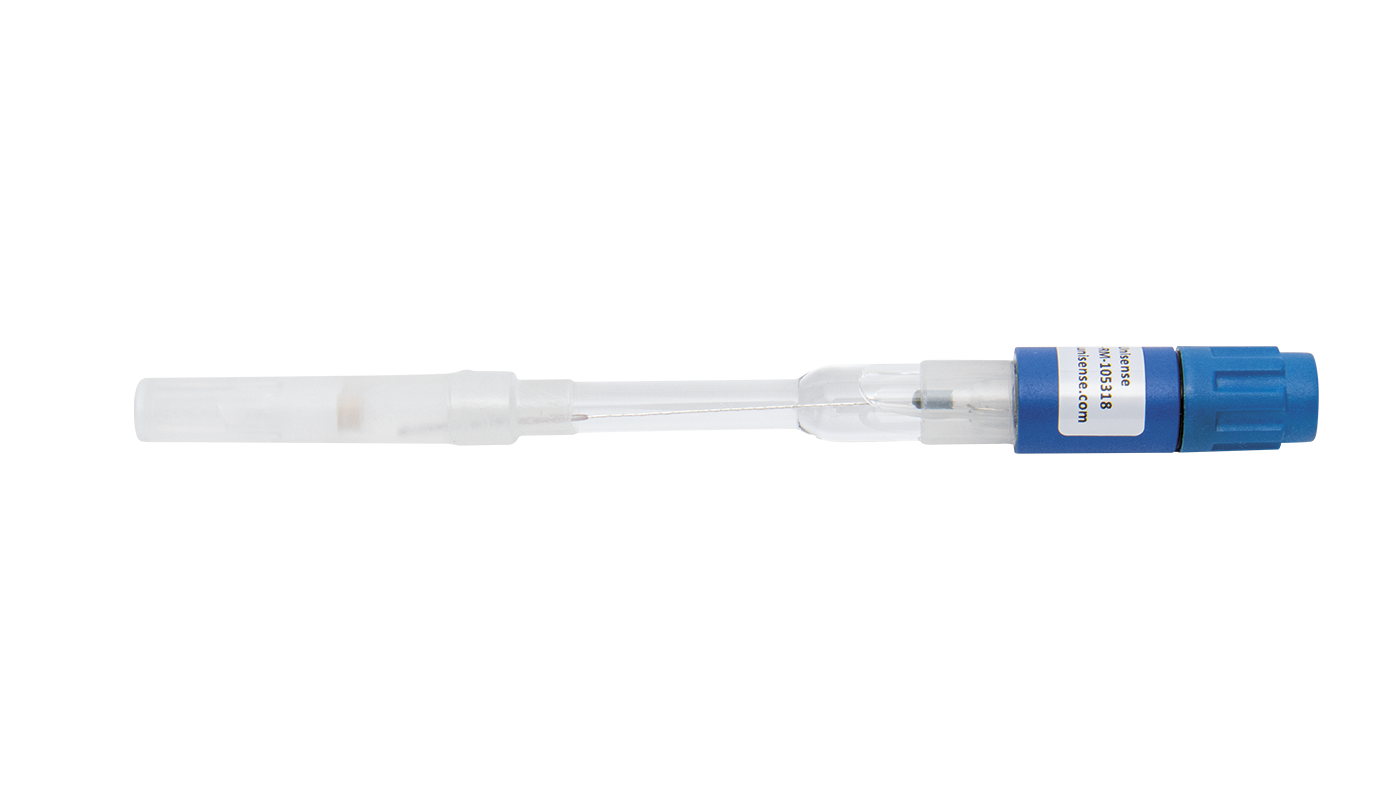
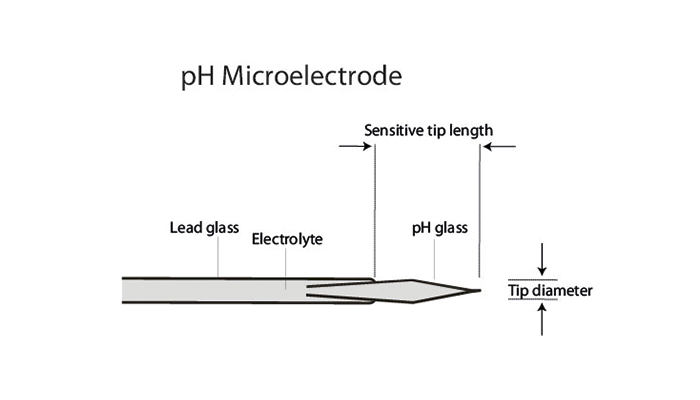
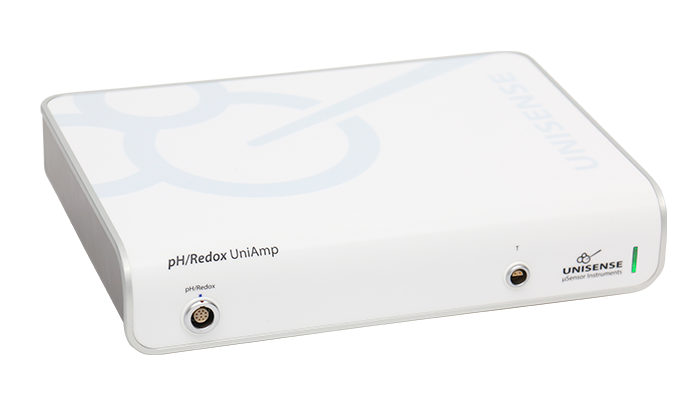
pH Microelectrode
The Unisense pH electrode offers you a fast and reliable research tool. With tip sizes down to 10 µm, you can complete high resolution and non-destructive microprofiles in a wide range of microenvironments. Read more...
pH measurement technology
This microelectrode is a miniaturized conventional pH electrode based on selective diffusion of protons through pH glass, and the determination of potentials between the internal electrolyte and a reference electrode.
The reference electrode can be either external (separate electrode) or internal. However, we only recommend internal references in applications where it is not possible to place two electrodes in the sample.
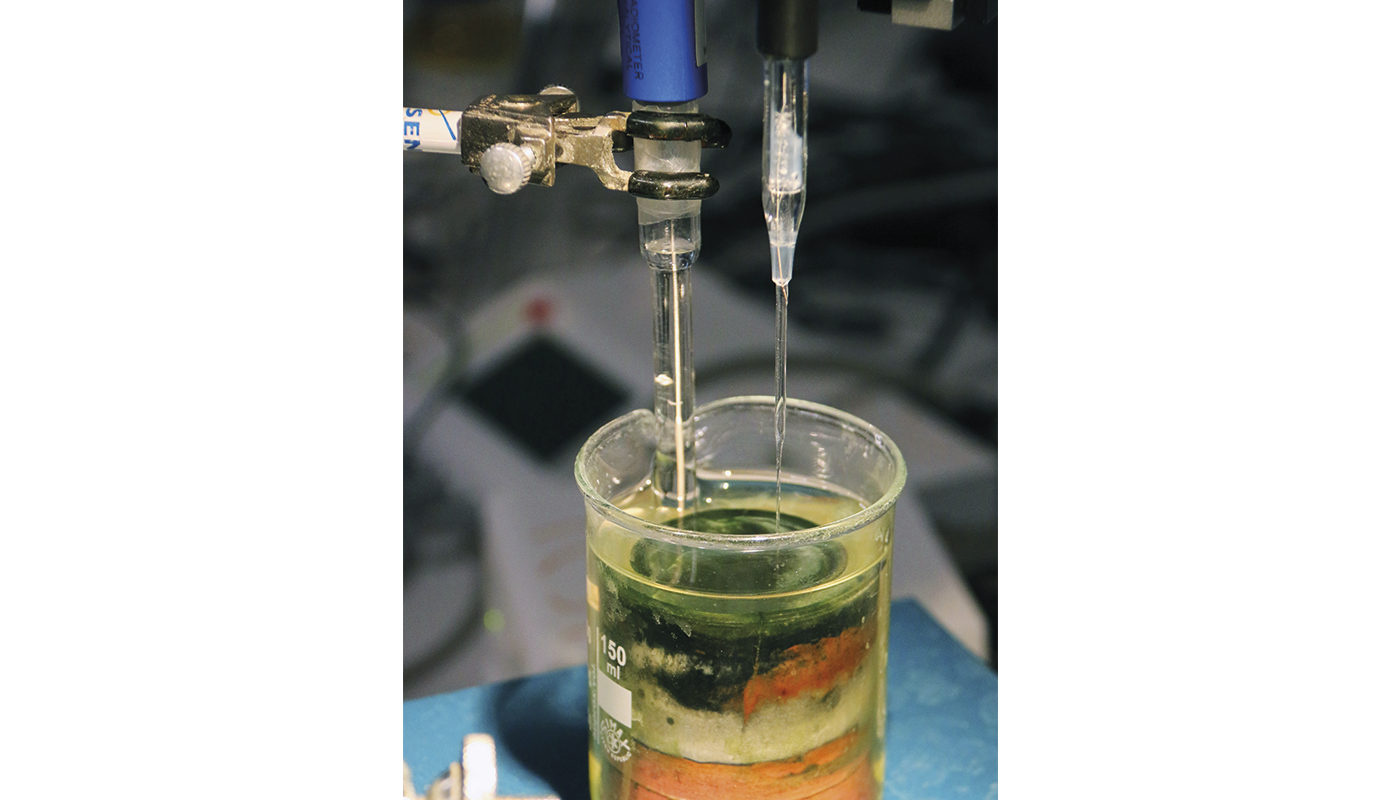
pH Microelectrodes
Description and time stamps:
00:00 Introduction
00:51 Tip design and detection principle
06:27 Specifications
14:43 Customizations
19:31 Troubleshooting

| Feature | Standard | Options | Extra price for option selection |
|---|---|---|---|
|
Feature
Total length
|
Standard
150-200 mm
|
Options
120-350 mm
|
Extra price for option selection
20-50%
|
|
Feature
Diameter 20 mm from tip
|
Standard
<2 mm
|
Options
<1 mm
|
Extra price for option selection
10%
|
|
Feature
Diameter 50 mm from tip
|
Standard
8 mm
|
Options
<2 mm
|
Extra price for option selection
20%
|
|
Feature
Glass shaft diameter
|
Standard
8 mm
|
||
|
Feature
Plastic shaft protection diameter*
|
Standard
11 mm
|
Options
Can be omitted
|
Extra price for option selection
|
*When mounted with in situ mini connectors, the shaft has no protection mounted, but fits directly into the in situ sensor mounts with pressure compensation. In situ sensors have a standard length of 130-160 mm.
| Item | Standard | Options | Extra price for option selection |
|---|---|---|---|
|
Item
Cable
|
Standard
Habia
|
||
|
Item
Cable length
|
Standard
1.5-2 m
|
Options
0-5 m
|
Extra price for option selection
Yes, depends on length
|
|
Item
Connector
|
Standard
LEMO
|
Options
BNC adapter
|
Extra price for option selection
Yes, order separately
|
|
Item
In situ gold pin connector*
|
Standard
No
|
Options
Yes
|
*Due to the small area of the pH-sensitive glass, Unisense pH10 electrodes typically have an inner resistance of 10⁹ Ohm. Therefore, the millivoltmeter input resistance must be at least 10¹³ Ohm.
| Attribute | Standard |
|---|---|
|
Attribute
Guaranteed lifetime
|
Standard
3 months
|
|
Attribute
Expected lifetime
|
Standard
>6 months
|
|
Attribute
Temperature range
|
Standard
-10-60°C
|
|
Attribute
Temperature range tip
|
Standard
-10-90°C
|
|
Attribute
Range
|
Standard
pH 2-10 (linear 4-9.2)
|
|
Attribute
Detection limit
|
Standard
0.01 pH unit
|
|
Attribute
Internal reference
|
Standard
Only as pH-500C*
|
|
Attribute
Spatial resolution
|
Standard
Approx. 100-250 µm | PH-500 and FT-cell: about 500 µm)
|
|
Attribute
Response
|
Standard
Log linear
|
*Construction of the sensor with an internal reference involves creation of a liquid junction 1 mm from the electrode tip. During measurements, this liquid junction must be submersed in the medium in order to complete the measurement circuit.
|
Response time (90%)
|
<10 s (from pH 7 to pH 4)
|
| pH Glass Electrode | Size and description | Outside tip dimensions (diameter x length of sensitive pH glass) |
|---|---|---|
|
pH Glass Electrode
pH-10
|
Size and description
8-12 µm - microelectrode
|
Outside tip dimensions (diameter x length of sensitive pH glass)
10-19 x 50-100 µm
|
|
pH Glass Electrode
pH-25
|
Size and description
20-30 µm - microelectrode
|
Outside tip dimensions (diameter x length of sensitive pH glass)
20-30 x 75-125 µm
|
|
pH Glass Electrode
pH-50
|
Size and description
40-60 µm - microelectrode
|
Outside tip dimensions (diameter x length of sensitive pH glass)
40-60 x 100-200 µm
|
|
pH Glass Electrode
pH-100
|
Size and description
90-110 µm - microelectrode
|
Outside tip dimensions (diameter x length of sensitive pH glass)
90-110 x 150-250 µm
|
|
pH Glass Electrode
pH-200
|
Size and description
180-220 µm - microelectrode
|
Outside tip dimensions (diameter x length of sensitive pH glass)
180-220 x 250-350 µm
|
|
pH Glass Electrode
pH-500
|
Size and description
400-600 µm - minielectrode
|
Outside tip dimensions (diameter x length of sensitive pH glass)
400-600 x 400-800µm
|
|
pH Glass Electrode
pH-500C
|
Size and description
400-600 µm (combination electrode with internal reference electrode)
|
Outside tip dimensions (diameter x length of sensitive pH glass)
400-600 x 400-800µm
|
|
pH Glass Electrode
pH-MR
|
Size and description
400-600 µm - in guide
|
Outside tip dimensions (diameter x length of sensitive pH glass)
400-600 x 400-800µm
|
|
pH Glass Electrode
pH-N
|
Size and description
1.1 x 40 mm - needle electrode
|
|
|
pH Glass Electrode
pH-NP
|
Size and description
1.6 x 40 mm - needle electrode for piercing
|
|
|
pH Glass Electrode
pH-ST-1/4
|
Size and description
1/4'' steel tube
|
|
|
pH Glass Electrode
pH-SL-1/4
|
Size and description
FT-cell 1/4'' Swagelok Tee
|
|
|
pH Glass Electrode
pH-SL-1/8
|
Size and description
FT-cell 1/8'' Swagelok Tee
|
|
|
pH Glass Electrode
pH-PEEK-1/8
|
Size and description
FT-cell 1/8'' PEEK Tee
|
|
|
pH Glass Electrode
pH-PEEK-1/16
|
Size and description
FT-cell 1/16'' PEEK Tee
|
|
|
pH Glass Electrode
pH-FT-GLASS-6
|
Size and description
Glass FT-cell 6 mm outer diameter
|
|
|
pH Glass Electrode
pH-FT-GLASS-8
|
Size and description
Glass FT-cell 8 mm outer diameter
|
Video Guides

A walk-though of how pH microelectrodes are made, how they work, specifications, and customizations.

Application Scientist Tage Dalsgaard shows you how to perform a calibration using the pH electrode calibration kit
Quick Enquiry
Related products
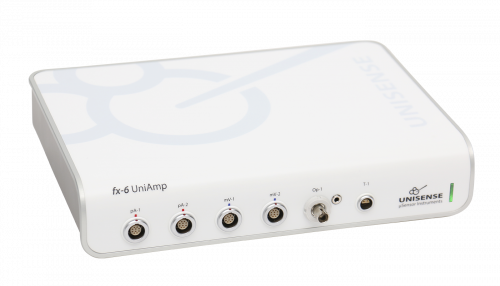
UniAmp Multi Channel for all Unisense sensors and electrodes including optical sensors
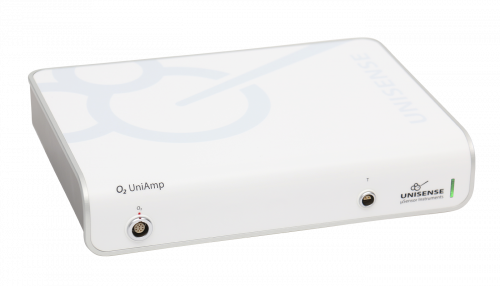
Economic amplifier portfolio for single analytes - O2, pH/mV, H2, N2O or H2S
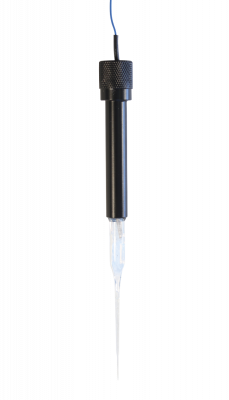
Reference electrode for pH or Redox microelectrodes
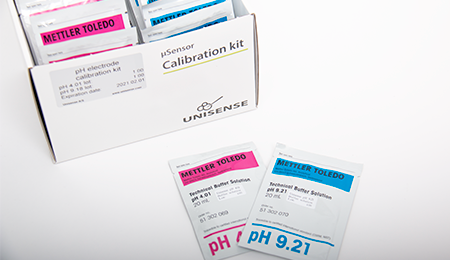
Ready-to-use and certified buffers for calibration at pH 4.01 and pH 9.18

